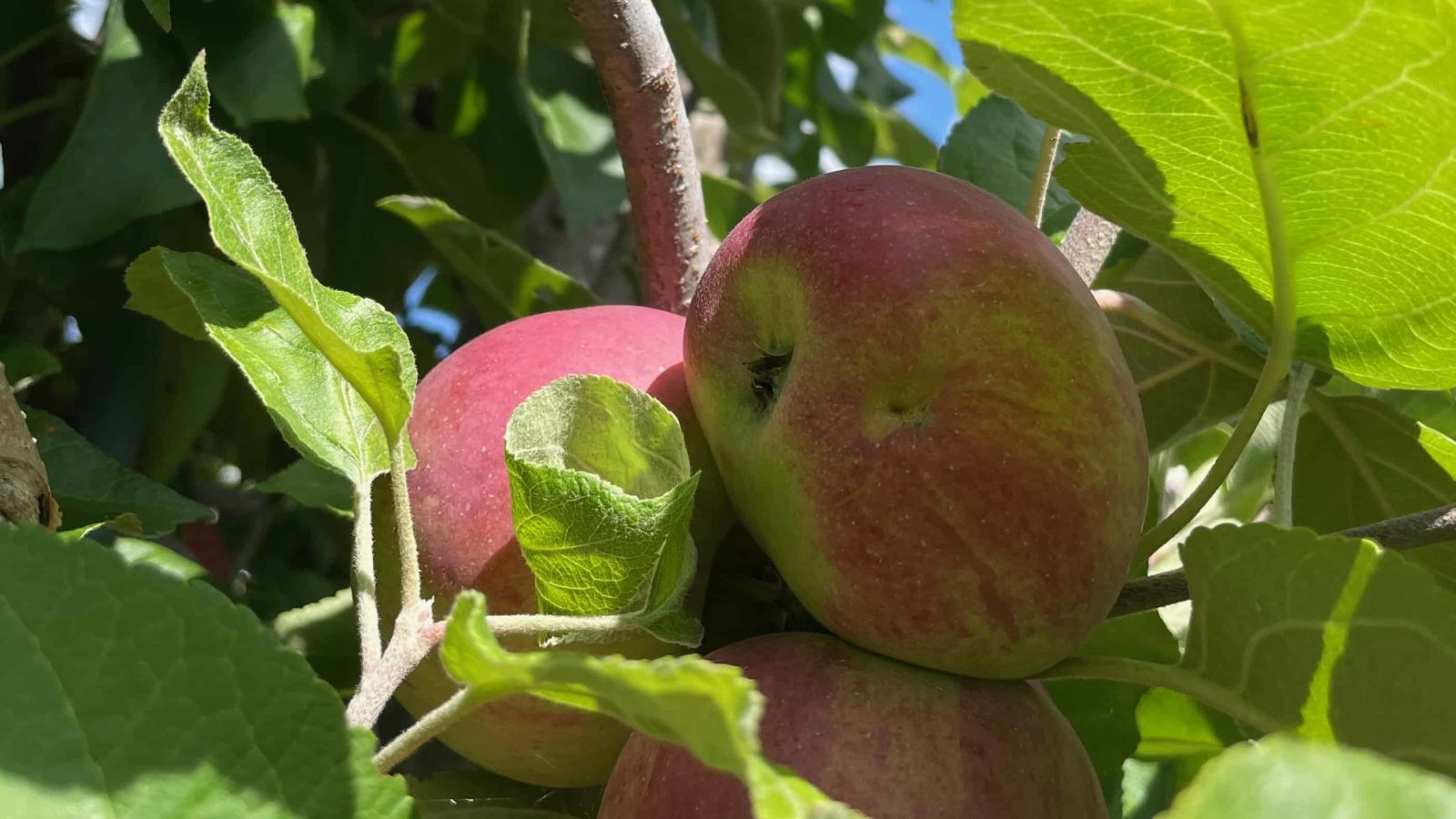‘A drop fell on the apple tree —
another — on the roof —
a half a dozen kissed the eaves —
and made the gables laugh —’
Emily Dickinson rounds the corner from the orchard to rest from apple picking — and runs straight into us.
On a Berkshire summer night, she tells stories from her life, when director Beth Skinner and composer Edward Herbst of Triple Shadow welcome Mari Andrejco to perform William Luce’s “The Belle of Amherst.”
Skinner and Herbst, recently returned from steeping in music and outdoor theater in Bali, often tour and rarely have performances at their home in the Berkshires.
“This is a homecoming,” Skinner said.
She and Herbst invite people to bring a picnic before the show and sit on the lawn while the sky changes.
“We usually evolve a new piece,” she explained, but she saw Andrejco perform as Emily in the church in Mount Washington, and the performance struck her with its power and simplicity. She and Herbst often design shows intricately, balancing sound and film and other elements.
“We decided it would be a relief to be nontechnical,” she said.
Andrejco will perform by sunlight and lantern light — and she is growing the set. The Triple Shadow barn will become Emily’s conservatory, filled with flowering plants grown in Victorian
gardens. Andrejco cares for them now on her own porch in New Ashford.
“It’s like playing Bach on a harpsichord instead of a piano — using the technology they had then,” she said.
She once played on Pantelleria, a Mediterranean island between Sicily and Tunisia, by the light of beeswax torches. But here she will perform in fields like Dickinson’s own.
When she talks about songbirds, her listeners may hear them.
Dickinson lived within the circumference of her garden and her father’s house. But her world was larger, Skinner said, “in her imagination and the people she wrote to, and her naughtiness — she was no prude.”
She was a complex woman, Andrejco agreed: gardening in a light cotton dress and refusing corsets, studying botany and writing ardent letters to people she rarely saw in the flesh.
“How do you bring the fullness of her life on stage,” she asked; “It feels like being a football player, the effort to do a 90-minute show yourself.”
A director she worked with in Virginia first suggested the play to her. Luce took the script almost entirely from Dickinson’s poems and letters, and Andrejco felt moved to say these words aloud.
“It haunts you,” she said.
The poems begin with a common thing — a grass snake, light on a plaster wall, a button — and end up in eternity, Skinner said.
“She puts words side-by-side that may not seem to fit,” Andrejco agreed, sometimes in pain and sometimes in comic genius, as when she storms that if her sister Lavinia (Vinnie) had her way, her cats would feed on “hummingbird cutlets and sherry.”
And knowing her life often makes her abstract thoughts abruptly solid. When she wrote of “a coming of great darkness,” she was going blind — and the verse became physical.
The play’s first act runs blithely through wit and games and callers. The second act grows more shadowed, as Dickinson grows older, makes irreversible choices, cares for her aging family and fights for her own voice in her own work.
She talks with a cast of invisible people. She stands surrounded by inescapable family, writing voluble letters, and alone.
” ‘Men say what to me,’ ” Andrejco said, quoting her — “Who was there for her to talk to?”
Her father, a lawyer and senator, sent her to college and yet disapproved of her reading and writing. Friends and family would hide books in the hedges and piano bench for her to find, Andrejco said.
In the play Emily, looking sadly back after his death, explained: “He never learned how to play.”
And her mother, who “didn’t believe in thought,” never listened — until she had a stroke and Emily cared for her.
Andrejco has researched Dickinson’s life in detail. Her first winter in New England, she read 13 books through a series of snowstorms, bringing her character to life.
For each performance, she will improvise an introduction to bring Emily on stage. And outside her performances, she imagines other scenes: Emily kneading bread and speaking to a young man in the kitchen doorway, telling him she can’t take a ride with him because her mother is ill…
Vinnie telling Emily to wear a more “suitable” dress to mail a letter, as though she wanted to run an errand in a bathrobe and slippers, and Emily refusing the many petticoats and pelisses common then …
“I would love to see her in the snow with her brother,” Andrejco said, “pouring maple syrup on the snow by the waterfall.”

